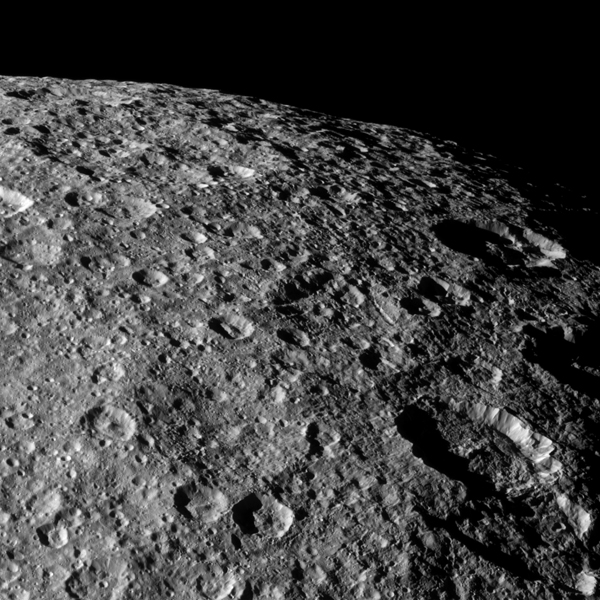"Take a good, long, luxurious look at these sights from another world," said Cassini Imaging Team Leader Carolyn Porco, "as they will be the last close-ups you'll ever see of this particular moon."
On Saturday, March 9, 2013 Cassini made the last close flyby of Rhea during its mission, coming within 620 miles (997km) of the surface of the moon. Cassini's mission is slated to end in 2017 with a controlled fall into Saturn's atmosphere. Cassini has been in orbit around Saturn since 2004 and is in its second mission extension.
"Our mission at Saturn has been ongoing for nearly 9 years and is slated to continue for another 4," Porco said in an email message. "Targeted flybys of the moons Dione, in June and August of 2015, and Enceladus, in October and December of 2015, are all that remains on the docket for detailed exploration of Saturn's medium-sized moons."
See more below:
[caption id="attachment_100650" align="aligncenter" width="580"]
This raw, unprocessed image of Rhea was taken on March 9, 2013. Credit: NASA/JPL-Caltech/Space Science Institute [/caption]
Besides these great final shots, NASA said the primary purpose of this last close flyby of Rhea was to probe the internal structure of the moon by measuring the gravitational pull of Rhea against the spacecraft's steady radio link to NASA's Deep Space Network here on Earth. The results will help scientists understand whether the moon is homogeneous all the way through or whether it has differentiated into the layers of core, mantle and crust.
In addition, Cassini's imaging cameras will take ultraviolet, infrared and visible-light data from Rhea's surface. The cosmic dust analyzer will try to detect any dusty debris flying off the surface from tiny meteoroid bombardments to further scientists' understanding of the rate at which "foreign" objects are raining into the Saturn system.
"We're nearing the end of this historic expedition," Porco said. "Let's enjoy the finale while we can."
[caption id="attachment_100652" align="aligncenter" width="580"]
This raw, unprocessed image of Rhea was taken on March 10, 2013 and received on Earth March 10, 2013. The camera was pointing toward Rhea at approximately 280,317 kilometers away, and the image was taken using the CL1 and CL2 filters. Credit: NASA/JPL-Caltech/SSI[/caption]
See more of the
raw images from the flyby at the CICLOPS website.
 Universe Today
Universe Today
